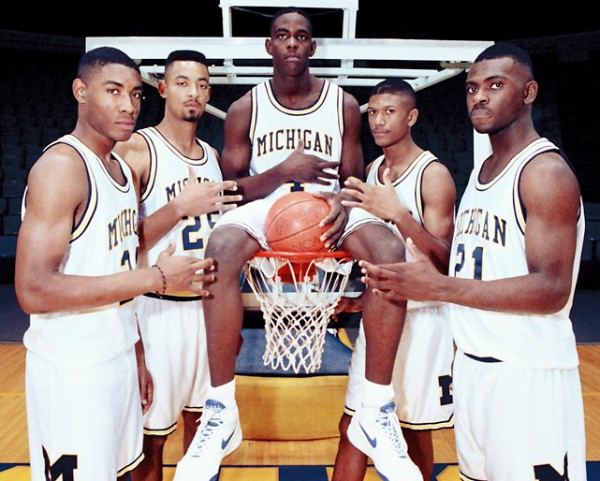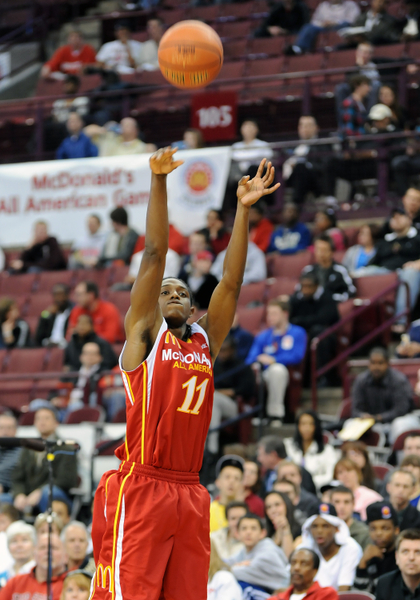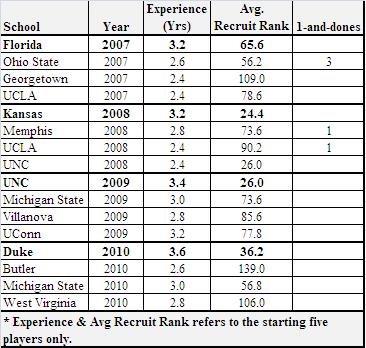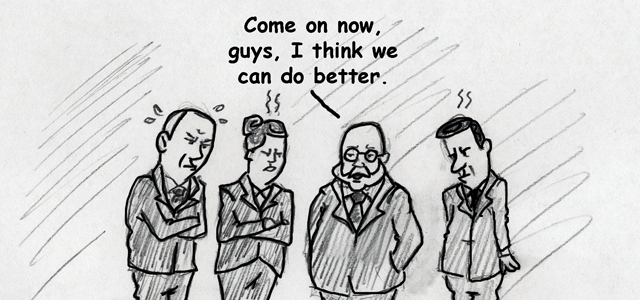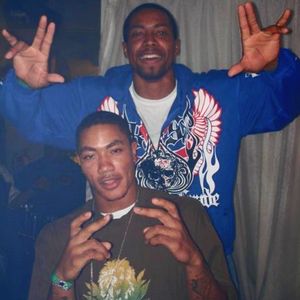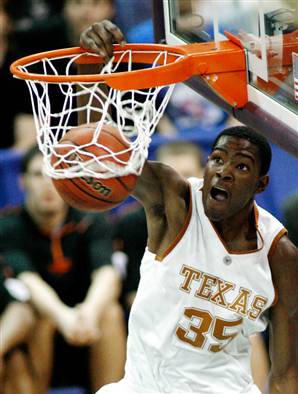Happy Fiscal New Year, everyone!

Along with the turn of the fiscal calendar, July 1 also represents the turn of the academic calendar. This is particularly appropriate for hoopheads, as the NBA’s season has ended and the draft madness that dominated bandwidth for the last two months after the Mario Miracle has died down to a whimper (well, there’s always 2009, right?). All there really is to look forward to until October is the Ego Known as Kobe Bryant’s attempt to restore American hegemony in the international (read: Olympics) hoops realm. That comes in August.
So now is as good a time as any to take a look back at the 2007-08 season and once again review how the NBA’s one-and-done rule worked out for the schools that enabled it. You might recall that we took a look at this last year and concluded: Ohio St., UNC, Texas… good. Georgia Tech, Washington… not so good. We also mentioned that several schools – Stanford, Tennessee, Arizona and Kansas included – were hanging onto players who could have been one-and-dones, but weren’t. With the exception of the often comatose Arizona team, the other three as a result had fantastic squads last year.
To start it off, let’s refresh ourselves with who the Rivals Top 20 recruits were coming into 2007-08. As you can see below, we added a few columns that outline the player’s freshman numbers (pts/rebs/assts or blocks) and his team’s record as well as whether he went into the draft or is returning next season.

So was it worth it? Our takes:
Kansas St. – Well Worth It. K-State rode the best.freshman.ever Michael Beasley and sorta-but-not-really one-and-done Bill Walker (he was a medical redshirt in 06-07) as far as it could, which included a third-place finish in the competitive Big 12, a second-round NCAA tournament appearance and the first home win in twenty-four years over its rival and eventual national champion Kansas Jayhawks. In other words, K-State’s best season in a generation. The important aspect of Beasley and Walker’s one-and-dones for KSU head coach Frank Martin is to capitalize on future recruiting from the good will and national notoriety mustered by these players while on campus. If he does not do so, and it’s soon back to the bottom of the Big 12 barrel for K-State, then the potential positive impacts of these stars passing through Manhattan, KS, were missed.
Memphis – Well Worth It. This too is a no-brainer. #1 overall pick Derrick Rose converted a competitive yet incomplete team that would consistently flame out prior to the Final Four against other elite teams into a team that probably should have won the national title. Rose led Memphis to a 38-2 record and had the Tigers in the argument for the most dominant season in the post-Wooden era before its epic free-throw meltdown in the championship game. Even only as a runner-up, a Memphis fan would be hard pressed to find much else wrong with the 07-08 season, and as such, the one-year stopover by Derrick Rose was well worth it.

Memphis Would Take A Rose Every Year (AP photo/Seth Wenig)
UCLA – Worth It. This was a tough one, because UCLA came into the 07-08 season already having been to the last two Final Fours. Anything short of that measure was going to be a disappointment (although Bruin fans might argue anything less than a national title is a disappointment). We’ll argue, however, that Kevin Love brought a toughness and star-quality to Westwood that had been lacking on Ben Howland’s previous teams. Not to mention that UCLA last season at 35-4 was simply a better team than the ones led by backcourt players (Afflalo and Farmar). More than anything, Love’s presence solidifed UCLA again as a marquee destination for top-notch recruits, as Howland has penned five of the Rivals Top 50 in the Class of 2008.
Arizona – Worth It. It’s quite possible that Jerryd Bayless last season saved Arizona from breaking its NCAA Tournament streak of 24 consecutive appearances. Arizona certainly didn’t have a great year amidst all the Lute Olson divorce and feud with Kevin O’Neill turmoils, but with a final record of 19-15, you have to figure that Bayless’ fantastic freshman year was worth a few wins that put the Cats back into the field of 65. But that’s about all it was worth. It certainly didn’t make Arizona into a contender of any kind, and it’s doubtful whether there will be any residual effects from Bayless’ time in Tucson.
Indiana – Worth It. Eric Gordon‘s arrival in Bloomington was worth it if for no other reason than it gave Hoosier fans something to be excited about for approximately three months (Nov-Jan). Now that the wheels have come completely tumbling off of the Indiana program, we have to wonder just how long their fans will covet and remember the halcyon days when IU was 16-1 and ranked #7 in the AP Poll. Of course, E-Giddy was partially responsible for Indiana’s subsequent collapse (18.2 ppg on 37.2% FG/25.3% 3FG shooting in the last 13 games (8-5)), but we put most of that on the ultimate dismissal of Kelvin Sanctions whereupon the entire team simply quit playing. So in our view, this one-and-done represents the last great season that Indiana will have for a while. Too bad it couldn’t have worked out better for everyone involved.

Gordon Left More than a Bloody Tooth in His Wake (photo credit: Bloomington Herald-Times)
USC – Not Worth It. For a while during the season, it appeared as if the OJ Mayo one-and-done situation might just work out for Tim Floyd and the Trojan Nation. Similar to K-State, USC hadn’t seen this much hoops attention in years – with Mayo as the headliner, USC played numerous national television games, beat UCLA at Pauley, and ended up tied for third in the rugged Pac-10. Of course, the wheels came off when USC failed to show up to its hyped battle against K-State in the first round of the NCAAs and the propriety of Mayo’s eligibility was called into question by ESPN soon thereafter. Throw in Davon Jefferson (a one-and-done from the Class of 2006 who went to prep school for a year before enrolling at USC) and his foolish decision to enter this year’s draft (undrafted) and we’re not sure just how successful USC can claim 2007-08 was. After all, the 2006-07 edition of the Trojans, led by Nick Young and Gabe Pruitt, also finished third in the Pac-10 but had a better overall record (23-11) and played into the second weekend of March Madness (giving Carolina all it wanted in the process). Finally, with another uber-recruit, Demar DeRozan, coming to USC next year, Floyd needs to be hyper-vigilant about those nefarious agents and runners in light of the Mayo debacle because more eyes will be watching.
NC State – Not Worth It. Hey, remember all the preseason talk about how NC State was the third best team in the ACC, and a definite NCAA Tournament team? Yeah, we don’t either. Actually, we do, and few of the pundits will own up to the fact that it was a terrible prediction. For the record, NC State ended up 15-16, but the Wolfpack were 4-12 in the ACC (worse than the previous year’s 5-11 campaign that inspired such foolishness) and lost their last nine games. So what did JJ Hickson’s presence in Raleigh bring to the team? Other than team chemistry problems, of course? It doesn’t appear that he brought much else than an ability to get himself drafted. NC State will likely be significantly better without him next season.

What Chemistry Problems?
LSU – Not Worth It. While we’re in the business of ripping bad teams with one-and-done players, we shouldn’t overlook the LSU Tigers. LSU seems to have one of these guys about every other year anyway, so it probably doesn’t matter much in terms of long-term effects, but a 13-18 record with a loss at Tulane calls into question the value of Anthony Randolph’s tenure on campus in Baton Rouge. Certainly the mail-it-in coaching style of Mr. Misty Champagne didn’t help things out much, but even with John Wooden coaching that team, we’re not sure how much Randolph could have lifted the Bayou Bengals.
Others. These teams all had one-and-dones of questionable efficacy. Put another way, these teams probably wouldn’t have been much better nor worse had these players gone elsewhere. Exhibit A is Texas A&M‘s DeAndre Jordan. TAMU was a tourney team anyway, led by Joseph Jones and Josh Carter, and it’s doubtful that Jordan’s four double-figure points games and two double-figure rebounds games in the Big 12 had much of an effect on A&M’s successful season. Not Worth It. Syracuse fans may disagree with us here, but despite Donte Greene‘s exceptional first-year numbers, we find it hard to believe that the Orange would have been any less average than they already were last year (21-14, 9-10 Big East). After all, Jim Boeheim could take five schoolgirls and make them competitive – he just wouldn’t win the title with them (unless Carmela Anthony was on the team). The question is whether Syracuse fans are pleased with a third-round NIT appearance, and we all know the answer to that – a resounding no. For a school with multiple F4s and a recent championship banner, missing the NCAAs completely is a failing season, no matter the reasonable expectation. Not Worth It. Finally, we look at Ohio St., who took Kosta Koufos to replace last year’s one-and-donest, Greg Oden. The answer here once again comes down to the question of expectation vs. reality of the situation. Without Oden, Mike Conley and Daequan Cook, it wasn’t realistic for Thad Matta to make another run at the F4; but the bar has been raised so high at Ohio St. under Matta that a 24-13 season leading to an NIT championship must necessarily be viewed as less-than-stellar. Winning the Capital One Bowl doesn’t match the Rose Bowl, does it, Buckeye fans? We’ll call this one a Push.
Final Thoughts. With so many freshmen leaving this year from the top 20 Rivals list, we’d guess only Florida with Nick Calathes and Chandler Parsons returning may be a team to really watch closely next year. Otherwise, keep an eye on UCLA, Wake Forest and UConn, each of which has multiple top twenty players coming onto campus next year.
































